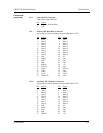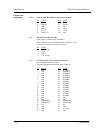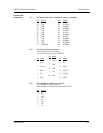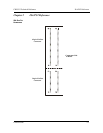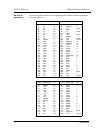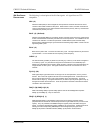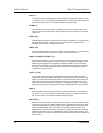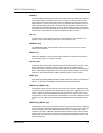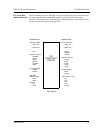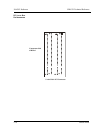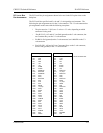
ISA/PCI ReferenceCBI/CGI Technical Reference
Chassis Plans 2-5
NOWS# (I)
The No Wait State (NOWS#) signal tells the microprocessor that it can complete the present bus
cycle without inserting any additional wait cycles. In order to run a memory cycle to a 16-bit
device without wait cycles, NOWS# is derived from an address decode gated with a Read or
Write command. In order to run a memory cycle to an 8-bit device with a minimum of two wait
states, NOWS# should be driven active on system clock after the Read or Write command is
active gated with the address decode for the device. Memory Read and Write commands to a
8-bit device are active on the falling edge of the system clock. NOWS# is active low and should
be driven with an open collector or tri-state driver capable of sinking 20 mAmps.
OSC (O)
Oscillator (OSC) is a high-speed clock with a 70-nanosecond period (14.31818 MHz). This
signal is not synchronous with the system clock. It has a 50% duty cycle.
REFRESH# (I/O)
The REFRESH# signal is used to indicate a refresh cycle and can be driven by a micropro-
cessor on the I/O channel.
RESDRV (O)
Reset Drive (RESDRV) is used to reset or initialize system logic at power-up time or during a
low line-voltage outage. This signal is active high.
SA[19::0] (I/O)
Address bits SA[19::0] are used to address memory and I/O devices within the system. These
twenty address lines, in addition to LA[23::17], allow access of up to 16MB of memory.
SA[19::0] are gated on the system bus when BALE is high and are latched on the falling edge of
BALE. These signals are generated by the microprocessor or DMA Controller. They also may
be driven by other microprocessors or DMA controllers that reside on the I/O channel.
SBHE# (I/O)
System Bus High Enable (SBHE#) indicates a transfer of data on the upper byte of the data bus,
D[15::8]. 16-bit devices use SBHE# to condition data bus buffers tied to D[15::8].
SMRDC# (O), MRDC# (I/O)
These signals instruct the memory devices to drive data onto the data bus. SMRDC# is active
only when the memory decode is within the low 1MB of memory space. MRDC# is active on all
memory read cycles. MRDC# may be driven by any microprocessor or DMA controller in the
system. SMRDC is derived from MRDC# and the decode of the low 1MB of memory. When a
microprocessor on the I/O channel wishes to drive MRDC#, it must have the address lines valid
on the bus for one system clock period before driving MRDC# active. Both signals are active
low.
SMWTC# (O), MWTC# (I/O)
These signals instruct the memory devices to store the data present on the data bus. SMWTC#
is active only when the memory decode is within the low 1MB of the memory space. MWTC# is
active on all memory write cycles. MWTC# may be driven by any microprocessor or DMA
controller in the system. SMWTC# is derived from MWTC# and the decode of the low 1MB of
memory. When a microprocessor on the I/O channel wishes to drive MWTC#, it must have the
address lines valid on the bus for one system clock period before driving MWTC# active. Both
signals are active low.



